Site Visits & Events
- Wednesday 25th October 2023
- Afternoon (TBC)
- Curtin University – Kent St, Bentley WA 6102
Tour options include:
Curtin HIVE – Tour
The Hub for Immersive Visualisation and eResearch (HIVE) provides systems for advanced presentation, communication and interpretation of data, to find solutions to real-world challenges.
Curtin’s expertise in virtual reality (VR), augmented reality (AR) and large- scale displays can help businesses exploit new commercial opportunities.
With visualisation systems such as the Tiled Display, Cylinder, Wedge, Dome, Hologram Table and VR/ AR headsets, the HIVE is an important centre of training and interdisciplinary research collaborations at Curtin.
Binar Space Program – Lab Tour
The SSTC hosts the Binar Satellite Program, a project designing and assembling the next generation of Australian small spacecraft in Western Australia. Binar will advance understandings of the solar system and lower the barrier for operating in space.
The Binar Space Program was born from the Space Science and Technology Centre’s desire to explore our solar system and address the limitations in existing small spacecraft platforms. As a vertically integrated centre, we have experience and capability in designing, building, deploying, operating and maintaining complex technical systems and extracting scientific and commercial value.
Curtin Institute of Radio Astronomy – Talk or Tour
CIRA aims to help develop and build the world’s next generation of radio telescopes, including the Square Kilometre Array (SKA). The SKA’s scale and goals demand excellence and innovation in various areas of astrophysics, engineering and computer science.
The only functional precursor for the SKA is the Murchison Widefield Array (MWA), a low-frequency radio telescope built and operated by CIRA in the radio-quiet Murchison region of Western Australia. Developed in collaboration with more than 20 international partners in six countries, it is key to our capabilities.
Desert Fireball Network – Talk
The Desert Fireball Network is an inter-disciplinary research group investigating the mysteries of the solar system’s formation through the study of meteorites, fireballs and their pre-Earth orbits.
The DFN is a national distributed network of over 50 disruption-tolerant fully autonomous digital observatories. The observatories continually monitor a third of Australian skies – 3 million km². The DNF captures the paths of fireballs in the sky using intelligent imaging systems, automated data reduction pipeline, real-time server-side triangulation and supercomputer data management systems. From there, trajectories are triangulated from multiple viewpoints, linking the rock’s pre-Earth orbit to its landing site for recovery.
John de Laeter Centre – Tour
The Institute for Geoscience Research brings together researchers across our geosciences spectrum, including the John de Laeter Research Centre. The Centre hosts over $25 million worth of analytical and mass spectrometry infrastructure.
Expertise within the institute spans ore mineralisation and deposit formation, sedimentary environments, organic and isotope geochemistry, exploration geophysics, geophysical imaging and metal ore bioleaching.









